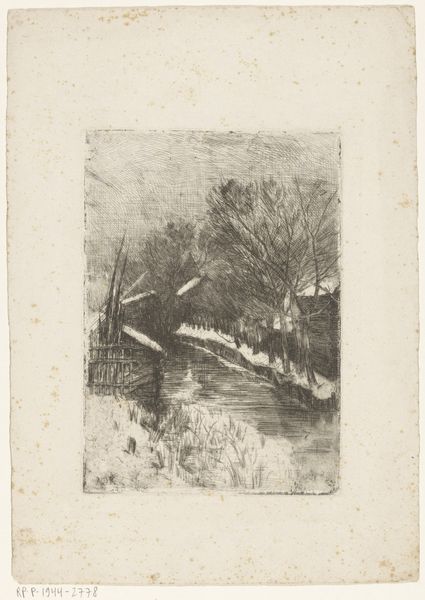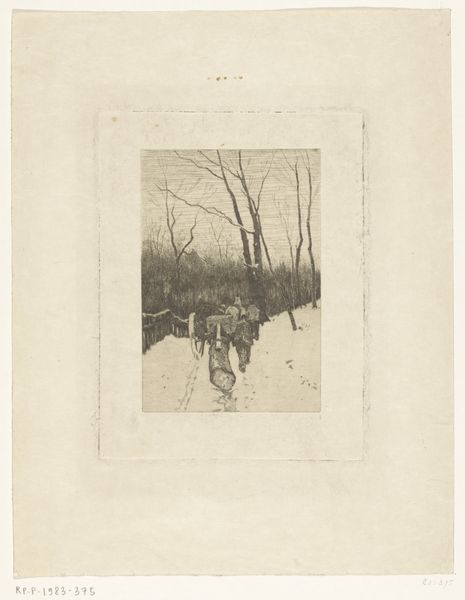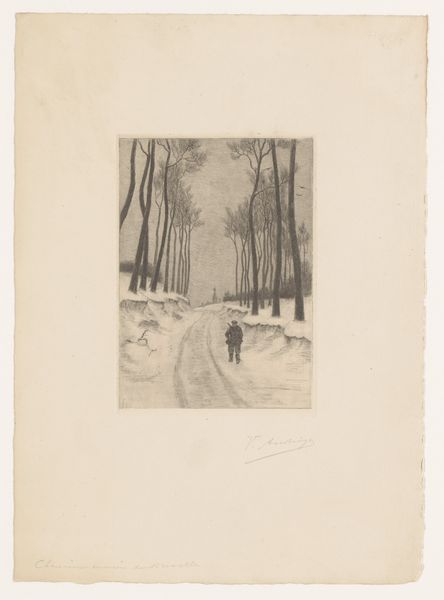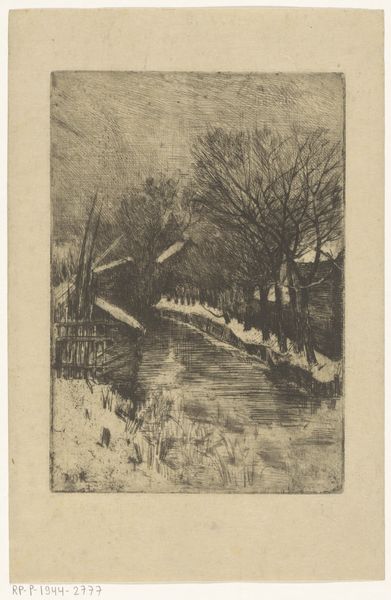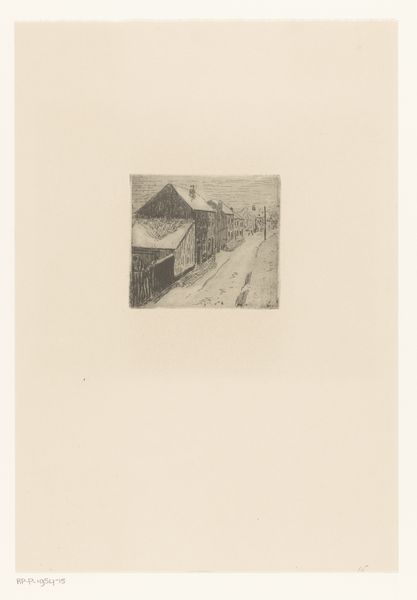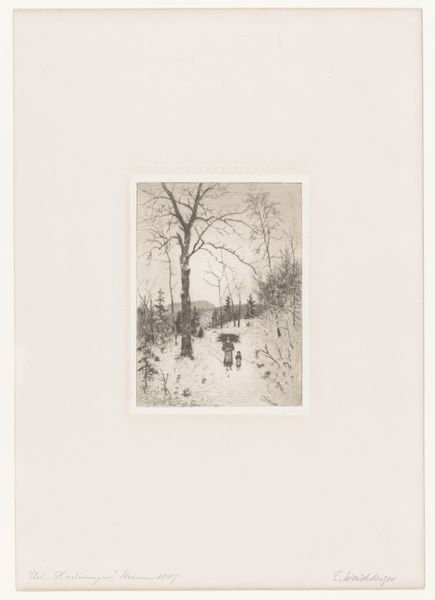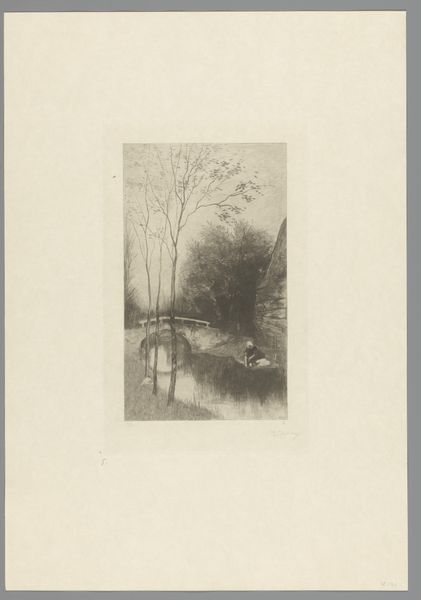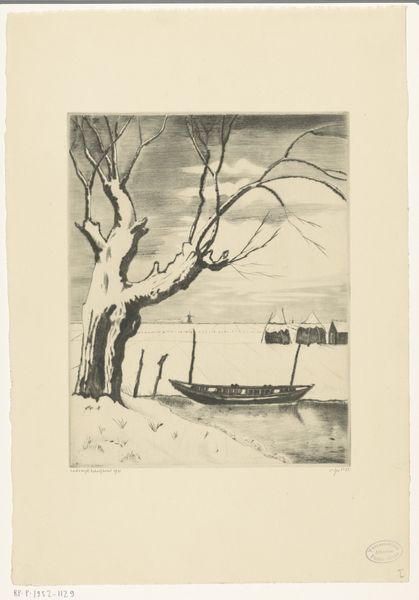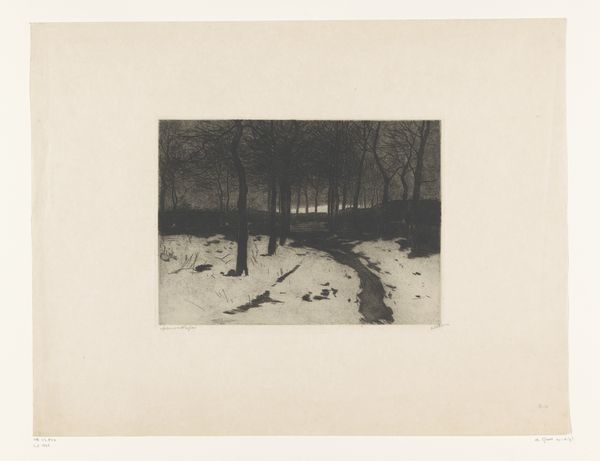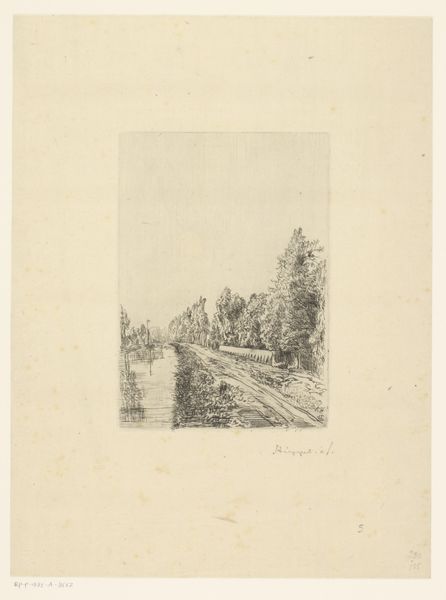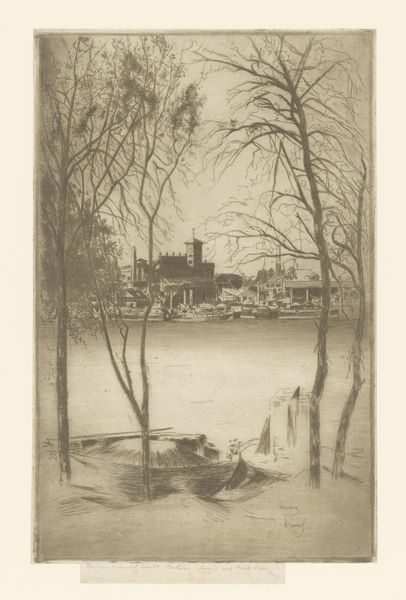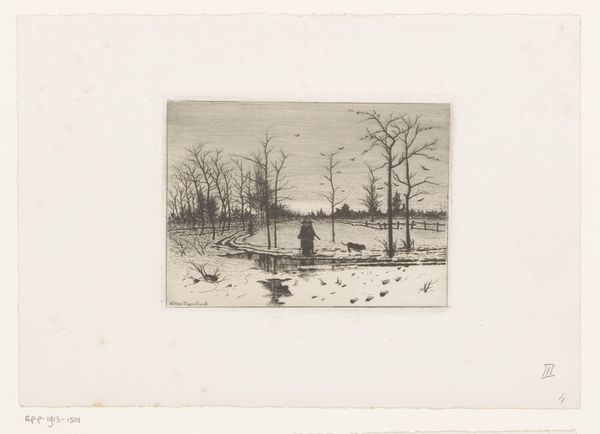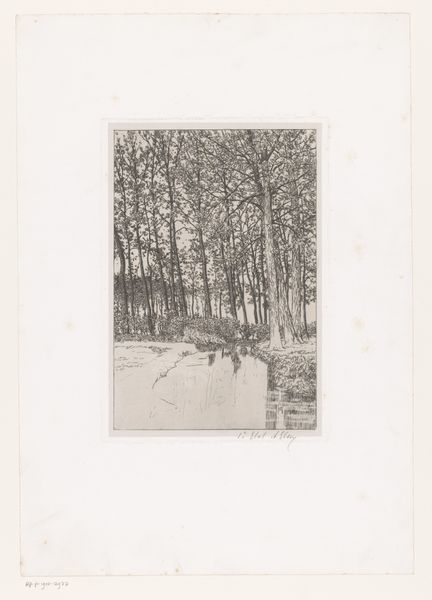
print, etching
# print
#
etching
#
landscape
#
geometric
#
cityscape
#
street
#
realism
Dimensions: height 318 mm, width 239 mm
Copyright: Rijks Museum: Open Domain
Curator: "Stadsgezicht in Gent," a 1928 etching by Jules de Bruycker. Notice how subdued the colors are, almost monochromatic. Editor: It really does capture a sense of a somber, perhaps even a drab, urban landscape. There’s something about the geometry of the buildings combined with the organic shapes of the bare trees. How do you see the artist’s choice of printmaking affecting the viewer’s experience? Curator: Well, the choice of etching, that process of using acid to cut into the metal plate, that is, the means of production and how it affects the output... it's incredibly important here. Think about the labour involved. The fine lines achieved with etching emphasize a certain industrial, almost alienated feel, don’t you think? It makes me question what that isolation suggests about urban life at the time. Are the textures more meaningful to you? Editor: Textures, definitely the sharp lines versus softer blurred tones… But what about the everyday subject matter? How does that interact with the 'high art' status given to the final product? Curator: Exactly! This blurring of high art and everyday experience is central. The material reality – the etching process, the paper it’s printed on – meets the social reality of Ghent in the 1920s. The choice of scene, the ordinary street view, is elevated by the labor-intensive printmaking, isn’t it? It questions what's valued, what becomes "art." Editor: I see your point. Thinking about the materials and process shifts my perspective on the subject entirely. I was stuck on just ‘cityscape’ as theme but this really is about materiality and labor. Curator: Indeed! Analyzing through this lens gives us insights into the production process, the work of the artist and ultimately into that socio-economic context shaping even an ordinary "Stadsgezicht."
Comments
No comments
Be the first to comment and join the conversation on the ultimate creative platform.
